Related Research Articles

Salem College is a private women's liberal arts college in Winston-Salem, North Carolina. Founded in 1772 as a primary school, it later became an academy and ultimately added the college. It is the oldest female educational establishment that is still a women's college and the oldest women's college in the Southern United States.

Moravian University is a private university in Bethlehem, Pennsylvania. The institution traces its founding to 1742 by Moravians, descendants of followers of the Bohemian Reformation under John Amos Comenius. It claims to be the sixth-oldest college in the United States.
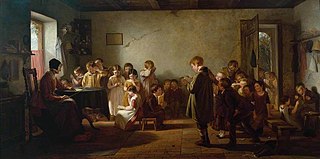
Dame schools were small, privately run schools for young children that emerged in the British Isles and its colonies during the early modern period. These schools were taught by a “school dame,” a local woman who would educate children for a small fee. Dame schools were extremely localized, and could typically be found at the town or parish level.

Moravian Academy is a prekindergarten through 12th grade coeducational college preparatory school located in Bethlehem, Pennsylvania. It predominantly serves students from the Lehigh Valley region of eastern Pennsylvania.
The following is a timeline of women's colleges in the United States. These are institutions of higher education in the United States whose student population comprises exclusively, or almost exclusively, women. They are often liberal arts colleges. There are approximately 35 active women's colleges in the U.S. as of 2021.

Education in the Thirteen Colonies during the 17th and 18th centuries varied considerably. Public school systems existed only in New England. In the 18th Century, the Puritan emphasis on literacy largely influenced the significantly higher literacy rate of the Thirteen Colonies, mainly New England, in comparison to Britain and France
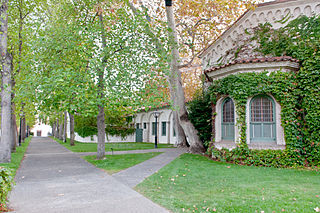
Women's colleges in the United States are private single-sex U.S. institutions of higher education that only admit female students. They are often liberal arts colleges. There were approximately 31 active women's colleges in the United States in 2018, down from a peak of 281 such colleges in the 1960s.
The Litchfield Female Academy in Litchfield, Connecticut, founded in 1792 by Sarah Pierce, was one of the most important institutions of female education in the United States. During the 30 years after its opening the school enrolled more than 2,000 students from 17 states and territories of the new republic, as well as Canada and the West Indies. Some 1,848 students known to have attended the school have been identified through school lists, diaries and journals, correspondence, as well as art and needlework done at the school. Many more, unidentified to date, attended, especially before 1814, when formal attendance lists were first kept. The longevity of the school, the size of the enrollments, the wide geographic distribution of the student body, the development of the curriculum and the training of teachers, all distinguish it from the numerous other female academies of the Early Republic. The young women were exposed to ideas and customs from all the relatively isolated parts of the new nation, developing a more national perspective than most Americans of the period.

Female education is a catch-all term of a complex set of issues and debates surrounding education for girls and women. It is frequently called girls' education or women's education. It includes areas of gender equality and access to education. The education of women and girls is important connection to the alleviation of poverty. Broader related topics include single-sex education and religious education for women, in which education is divided gender lines.
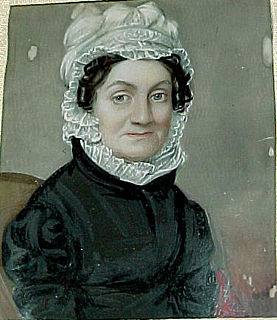
Sarah Pierce was a teacher, educator and founder of one of the earliest schools for girls in the United States, the Litchfield Female Academy in Litchfield, Connecticut. The school having been established in her house in 1792 became known as the Litchfield Female Academy in 1827. The school for girls attracted an estimated 3,000 students from across the United States and Canada. Some of her most famous attendees and protégés were Catharine Beecher and Harriet Beecher Stowe.

The Moravian Church in North America is part of the worldwide Moravian Church Unity. It dates from the arrival of the first Moravian missionaries to the United States in 1735, from their Herrnhut settlement in present-day Saxony, Germany. They came to minister to the scattered German immigrants, to the Native Americans and to enslaved Africans. They founded communities to serve as home bases for these missions. The missionary "messengers" were financially supported by the work of the "laborers" in these settlements. Currently, there are more than 60,000 members.
This article covers the period from the origin of the Moravian Church, as well as the related Hussite Church and Unity of the Brethren, in the early fourteenth century to the beginning of mission work in 1732. Further expanding the article, attention will also be paid to the early Moravian settlement at Bethlehem, Pennsylvania, following their first arrival in Nazareth, Pennsylvania in 1740.

The Moravian Museum of Bethlehem, also known as the 1741 Gemeinhaus and the Lewis David de Schweinitz Residence, is a historic house museum at 66 West Church Street in Bethlehem, Pennsylvania. Built in 1741 to house the early Moravian community as well as the community's place of worship, the Saal, it is the oldest surviving building in Bethlehem, the largest surviving log house in continuous use in the U.S. and also significant for its association with the botanist and mycologist Lewis David de Schweinitz (1780–1834). It was declared a National Historic Landmark in 1975. The building is part of the Historic Moravian Bethlehem District which was designated as a National Historic Landmark District in 2012 and later named to the U.S. Tentative List in 2016 for nomination to the World Heritage List.
In the early colonial history of the United States, higher education was designed for men only. Since the 1800s, women's positions and opportunities in the educational sphere have increased. Since the late 1970s and early 1980s, women have surpassed men in number of bachelor's degrees and master's degrees conferred annually in the United States and women have continuously been the growing majority ever since, with men comprising a continuously lower minority in earning either degree. The same asymmetry has occurred with Doctorate degrees since 2005 with women being the continuously growing majority and men a continuously lower minority.

The Age of Enlightenment dominated advanced thought in Europe from about the 1650s to the 1780s. It developed from a number of sources of “new” ideas, such as challenges to the dogma and authority of the Catholic Church and by increasing interest in the ideas of science, in scientific methods. In philosophy, it called into question traditional ways of thinking. The Enlightenment thinkers wanted the educational system to be modernized and play a more central role in the transmission of those ideas and ideals. The development of educational systems in Europe continued throughout the period of the Enlightenment and into the French Revolution. The improvements in the educational systems produced a larger reading public which resulted in increased demand for printed material from readers across a broader span of social classes with a wider range of interests. After 1800, as the Enlightenment gave way to Romanticism, there was less emphasis on reason and challenge to authority and more support for emerging nationalism and compulsory school attendance.
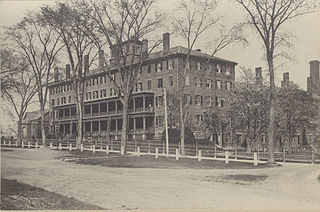
A female seminary is a private educational institution for women, popular especially in the United States in the nineteenth and early twentieth centuries, when opportunities in educational institutions for women were scarce. The movement was a significant part of a remarkable transformation in American education in the period 1820–1850. Supporting academic education for women, the seminaries were part of a large and growing trend toward women's 'equality'. Some trace its roots to 1815, and characterize it as at the confluence of various liberation movements. Some of the seminaries gradually developed as four-year colleges.

The history of schools in Scotland includes the development of all schools as institutions and buildings in Scotland, from the early Middle Ages to the present day. From the early Middle Ages there were bardic schools, that trained individuals in the poetic and musical arts. Monasteries served as major repositories of knowledge and education, often running schools. In the High Middle Ages, new sources of education arose including choir and grammar schools designed to train priests. Benedictine and Augustinian foundations probably had charitable almonry schools to educate young boys, who might enter the priesthood. Some abbeys opened their doors to teach the sons of gentlemen. By the end of the Middle Ages, grammar schools could be found in all the main burghs and some small towns. In rural areas there were petty or reading schools that provided an elementary education. Private tuition in the families of lords and wealthy burghers sometimes developed into "household schools". Girls of noble families were taught in nunneries and by the end of the fifteenth century Edinburgh also had schools for girls, sometimes described as "sewing schools". There is documentary evidence for about 100 schools of these different kinds before the Reformation. The growing humanist-inspired emphasis on education cumulated with the passing of the Education Act 1496.
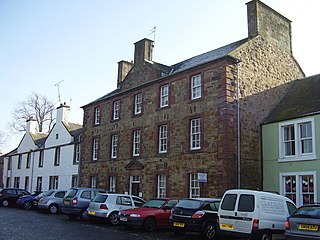
Scottish education in the eighteenth century concerns all forms of education, including schools, universities and informal instruction, in Scotland in the eighteenth century.
Donnison School is an English former school in the East End neighbourhood of Sunderland. It opened in 1798 to provide a free education to girls, funded by a bequest from Elizabeth Donnison. In the early 21st century it became a media and heritage centre.
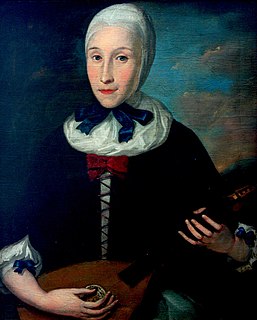
Benigna Zinzendorf, also known as Henrietta Benigna Justine Zinzendorf von Watteville (1725–1789), was the founder of the first boarding school for girls in the British American colonies, which became Moravian College. She was a missionary among Native Americans and assisted her father, Count Nicolaus Zinzendorf, and her husband, Bishop Johannes Langguth, in their religious activities in Europe and America. She enjoyed music and was an Eldress to girls' choirs beginning at the age of 14 and was a leader in an adult choir after she was married.
References
- 1 2 3 Haller, Mabel. "Moravian Influence on Higher Education in Colonial America." Pennsylvania History 25, no.3 (1958): 205-222
- 1 2 3 4 5 6 7 8 Reichel, William C.; Bigler, WM. H. (1901). A History of the Moravian Seminary for Young Ladies, At Bethlehem, PA. with a Catalogue of its Pupils, 1785-1870 (4th ed.). Lancaster: New Era Printing Company.
- 1 2 3 4 Smith, Jewel (2008). Music, Women, and Pianos in Antebellum Bethlehem, Pennsylvania: The Moravian Young Ladies' Seminary. Cranbury: Associated University Presses.
- 1 2 3 Woody, Thomas (1929). A History of Women's Education in the United States. New York: Octagon Books.